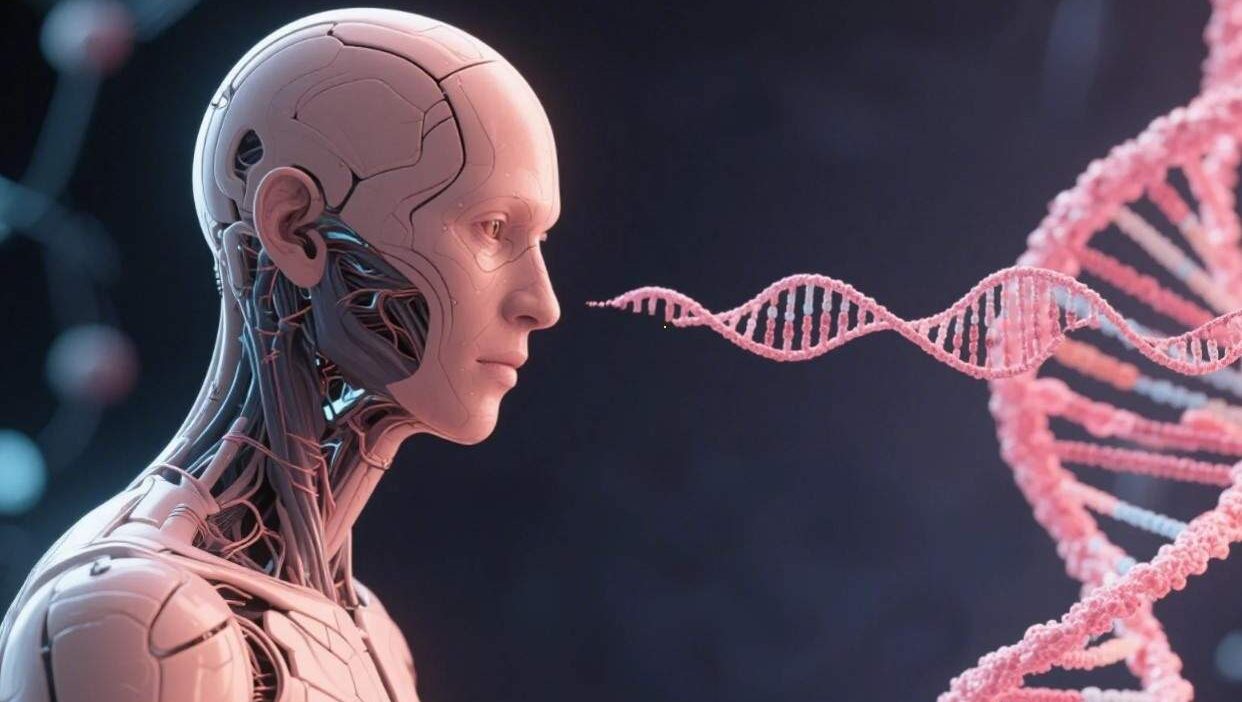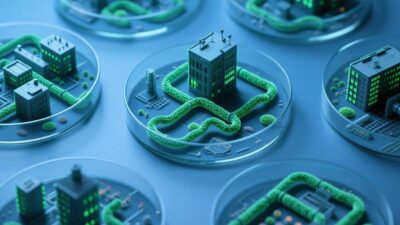Redefining the Boundaries of Human Potential
Beyond Biology—The Dawn of Engineered Evolution
Human evolution, once driven by natural selection, is entering a new era: post-human evolution via genetic augmentation. By editing DNA, inserting genes, or modifying biological systems, we are no longer passive products of evolution—we are active designers. This report explores how genetic augmentation is reshaping humanity’s future, from curing diseases to redefining what it means to be “human.”
What Is Genetic Augmentation?
Genetic augmentation uses biotechnologies like CRISPR-Cas9, base editing, and prime editing to alter DNA sequences. Unlike gene therapy (which fixes disease-causing mutations), augmentation aims to enhance traits—physical (e.g., muscle mass), cognitive (e.g., memory), or even emotional (e.g., resilience). Key tools include:
- CRISPR: Precision tools to cut and edit genes.
- Synthetic Biology: Designing artificial genes or biological pathways.
- Epigenetics: Modifying gene expression (e.g., turning “good” genes on, “bad” ones off) without altering DNA.
Current Frontiers: From Therapy to Enhancement
Today, genetic augmentation is transitioning from lab research to real-world applications:
- Disease Prevention: Editing genes to eliminate hereditary disorders (e.g., sickle cell anemia, cystic fibrosis).
- Cognitive Enhancement: Research into boosting memory or focus via genes linked to neuroplasticity (e.g., BDNF, the “brain-derived neurotrophic factor”).
- Physical Traits: Modifying genes for increased muscle endurance (e.g., ACTN3 for sprinting) or reduced aging (e.g., telomere-lengthening genes).
For example, trials using CRISPR to edit CCR5 (a gene linked to HIV resistance) have shown promise, while startups like Altos Labs are exploring cellular reprogramming to reverse aging.
Implications: The Post-Human Future
Genetic augmentation could redefine human potential, but it also raises profound questions:
Opportunities
- Medical Breakthroughs: Curing genetic diseases, reducing disability, and extending healthy lifespans.
- Enhanced Capabilities: Improving intelligence, physical performance, or stress resilience, potentially accelerating scientific or artistic innovation.
- Equity: Democratizing access to enhancements (if affordable) could reduce biological disparities.
Risks & Challenges
- Ethical Dilemmas: “Designer babies” (editing traits like intelligence or appearance) risk creating a genetic underclass.
- Unintended Consequences: Editing one gene may disrupt others, leading to unforeseen health issues (e.g., off-target effects in CRISPR).
- Regulatory Gaps: Global standards for augmentation are lacking, with countries like the U.S. and China adopting differing policies.
Ethics and Regulation: Navigating the Unknown
The line between “therapy” (curing disease) and “enhancement” (improving traits) is blurred. Key ethical concerns include:
- Consent: Can minors or future generations consent to genetic changes?
- Justice: Who gets access to enhancements? Wealthy individuals may hoard benefits, widening inequality.
- Safety: Long-term effects of gene editing are poorly understood, risking irreversible harm.
Regulators are responding: The WHO’s Human Genome Editing Governance Framework (2021) calls for strict oversight, while the EU’s CRISPR Regulation restricts germline editing (modifying sperm/egg DNA).
The Future: A New Phase of Evolution
Post-human evolution via genetic augmentation is no longer science fiction. As technology advances—refining CRISPR, mastering epigenetics, and understanding complex gene networks—we may witness:
- Personalized Evolution: Tailored gene edits to match individual goals (e.g., athletes optimizing for endurance).
- Hybrid Biology: Merging human DNA with synthetic biology (e.g., lab-grown organs, enhanced immune systems).
- Interstellar Readiness: Preparing humans for long-duration space travel via radiation resistance or oxygen efficiency.
Balancing Progress with Responsibility
Genetic augmentation holds the promise of unlocking human potential like never before. Yet, its power demands caution. By prioritizing ethics, equity, and rigorous safety standards, we can harness this technology to uplift humanity—ensuring that post-human evolution is not just about “upgrading” bodies, but about enriching lives.



